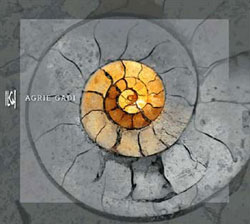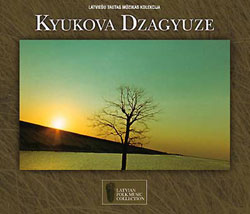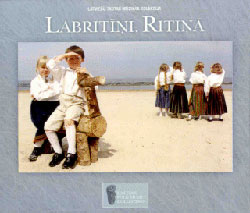
Iļģi have reached the big time in Latvian music. They have released a number of compact discs in recent years and have expanded from a strictly folklore group to something modern, worldly, and some might say, plain loud. So the release last year of Agrie gadi (The Early Years) could be seen as a way to (re)introduce people to Iļģi’s roots.
Agrie gadi is a two-CD compilation of various Iļģi songs from their inception in 1981 until 1991, along with a re-release of their 1993 recording, Rāmi rāmi. Being a long-time Iļģi fan myself, I find the evolution of their music wonderful and amazing. Their sound has dramatically changed since 1981, but the type and content of the folk songs they choose has stayed remarkably similar throughout the years. Because there are very few recordings of Iļģi’s early music, Agrie gadi finishes a circle, finally linking the past to the present and vice versa.
If there’s one word to describe the early Iļģi sound, it’s dreamy. Listening to Agrie gadi, you may at times feel as if you’re intruding on an intimate and private gathering of musician friends. Almost the only accompaniment on the first CD (1981-1991) is the traditional kokle. The songs have a beautiful, otherworldly, almost choral sound, although there is often little vocal harmony. The voices are strong, but delicate, and for most songs the entire ensemble sings and you don’t hear the full force of Ilga Reizniece’s voice (whether that’s for the better or worse is up to you), who has always been the heart of Iļģi.
The more lively “Kad maņ beja bolta puče” and the līgo song “Saule brida miglājos” are a couple of exceptions to the reverie of the first CD. The latter song relies on only two notes—and only Iļģi can give a two-note melody such style! The first CD also includes a very simple yet dramatic rendition of “Ar laiviņu ielaidos,” a favorite song of many Latvians. Otherwise, most of the songs are fairly unknown.
Despite the title Rāmi rāmi, which means calm, gentle or quiet, the second CD has a slightly (but only slightly) heavier sound and more variety than the first CD. The kokle, the main instrument on Rāmi rāmi, is again splendid. Many of the songs are sorrowful and intricately ornamented, such as the title song, “Rāmi rāmi,” as well as “Kas to teica,” “Kam tie tādi kumeliņi,” and “Kūkleites kūklēja.”
“Sveša mote mani sauce,” “Ozols auga jūrmalā,” and “Situ koku” have a similar sound with drums and strong bass lines. “Skaista mana brāļa sēta” is another beautifully arranged yet extremely simple song, this time with the main melody consisting of only three notes. “Zīdi zīdi” demonstrates an interesting traditional way of singing, where the words are almost declared rather than sung. Unfortunately, the last song, “Stādīju ieviņu,” seems a bit lackluster and monotonous.
For those who know Iļģi only from their last couple of recordings, Agrie gadi will definitely be a change. But it’s a pleasant change, a change for the calmer and quieter. For those who have been following Iļģi’s music since the 1980s, many of the songs may be familiar, particularly on the Rāmi rāmi CD, but it sure is nice to finally have a fresh replacement for those old tapes.
The Agrie gadi songs cover a range of topics, although Iļģi definitely have an affinity for the more mythical and mystical lyrics, as well as the minor keys. No light dance music here. And also no accordion, thankfully, which is heard on almost all folk recordings lately.
Even back in the early days Iļģi did more than just play and sing a folk song. They crafted it into a true piece of musical art.
Details
Agrie gadi
Iļģi
UPE Recording Co., 2002
UPE CD 032





